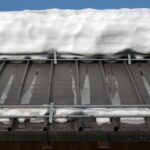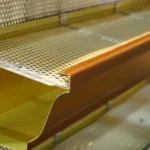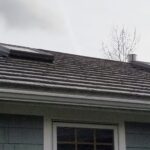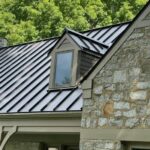Ice and Snow
PROBLEM
Ice and snow can cause substantial roof troubles. The biggest problem occurs when heat from the home rises through the attic and melts any snow that is on the roof over heated areas. Unfortunately, snow over unheated overhangs and porches does not melt and, when melted snow from higher up on the roof reaches that snow, it forms ice which can back its way up under the roofing material and eventually enter the structure. This is known as “ice damming” and can be the cause of substantial damage to buildings and their contents.
ANALYSIS
Metal roofing is very good at shedding ice and snow because of its relatively smooth surface. Additionally, particularly with aluminum roofing which reflects radiant heat so well, radiant heat passes through the snow as soon as the sun comes out, striking the metal roofing and reflecting back outward. This occurs over the entire roof and not just the heated areas. When this occurs, the bottom of the snowload becomes slippery, causing it to slide from the roof. The only problem that can exist is if the sliding snow comes off too quickly and in large amounts at once, causing damage to shrubbery or blocking doorways.
SOLUTION
Although there can be weather conditions that cause ice damming on any roof (such as extremely cold temperatures with no sun or when the snow builds up from the ground or gutters and pushes ice up onto the roof), metal roofing provides maximum protection against ice damming and subsequent damages. The use of Ice and Watershield type products or other protective underlayments on the roof can provide additional protection for any roof. If there are problems with sliding snow damaging shrubbery or blocking doorways, snowguards can be installed to meet manufacturers’ specifications in order to break up the snowload into smaller chunks as it falls from the roof. Care should be taken to not use snowguards too close to valleys or on very low pitch roofs where they might impede snow sliding to too great of a degree. In particularly troublesome instances, “heat tape” can be used over the overhangs to melt the snow. However, the gutters and downspouts must also be lined with “heat tape” to ensure that the melted snow can leave the roof.




